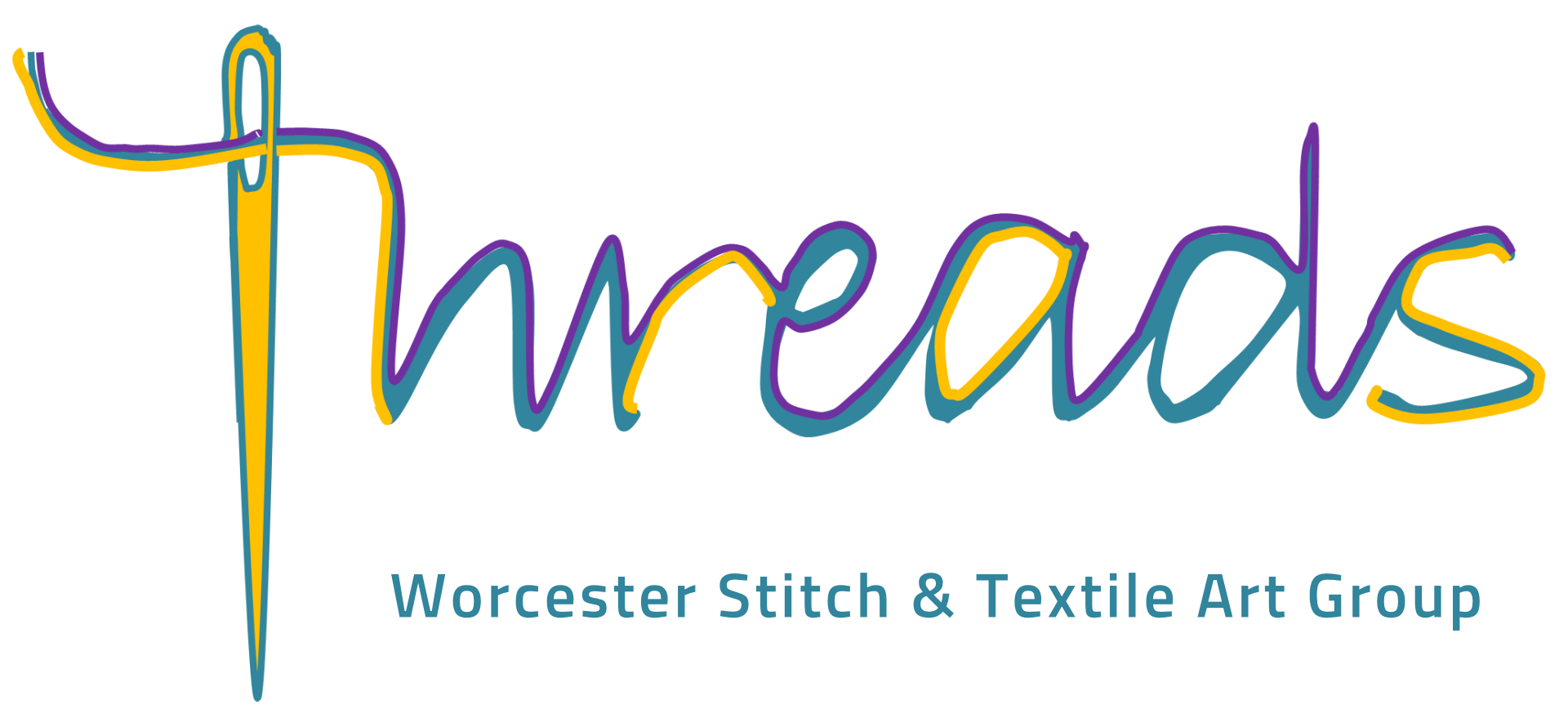



| Our other activities: |
07 February 2023
Lynda Monk is a mixed-media textile artist, tutor and author. She is a member of the East Anglian Stitch Textiles Group (EAST) which was formed in 1995 and held its first exhibition in 1997. Lynda’s talk detailed three exhibitions which she has been involved with during recent years, each being based on very careful research.
In the 2019 exhibition, “Power of Stitch”, she produced pieces of wearable art. Her “fabric” involved using sublimation printing to produce a brick design which was decorated with graffiti, some well-known phrases and cartoons which pass messages.
For the 2021 “Transformation” exhibition, Lynda was inspired by Grayson Perry who says that he “loves a good shrine”. Her research led her to visit places such as Postman’s Park in London, Crossbones Graveyard in Southwark and the Bone Church in Kutna Hora. She transformed thick, plain cardboard into a group of rusted wood/metal effect style shrines which held objects related to different themes e.g. the shrine to Grandad Ben held keys, and she created a shrine to the Winchester Geese, prostitutes who were licensed by the Bishop of Winchester. She also transformed an old, wooden case into a shrine commemorating nine lost boys of Postman’s Park; they all died saving the lives of others and might otherwise be forgotten e.g. John Cranmer who drowned whilst saving the life of a “stranger and foreigner”.
Lynda is now preparing for an exhibition in 2024, “Bridging the Gap”, for which she has produced four Victorian style coats for a father, mother, daughter and son. The images on the father’s coat mainly focus on the workhouse, the son’s coat shows images of child labour, and the mother and daughter coats contain large amounts of baby farmer images (women who, for a fee, would take care of babies of unmarried mothers until such a time as they were able to look after them themselves; some women were legitimate but others did this just for the money and with little care). Fabric was initially produced using sublimation, printing the images onto a linen look polyester fabric, cutting the images out and then backing them with a fusible webbing which was then placed in position and ironed onto a cotton backing fabric. Edges were neatened with a close zig-zag machine stitch. The garment pieces were then cut out and sewn together. (Lynda later found another method for speeding this process up.)
Before final pieces are produced, Lynda tries out many dozens of techniques/processes in order to achieve just what she wants, and she keeps meticulous notes so that she can reproduce what she really requires. She shared some of her processes with us e.g. CitraSolv transfer printing and caustic soda rust dyeing.
Those attending her course on Wednesday were going to look at processes described in her “beautiful bonded surfaces” publication.
Members enjoyed the opportunity to have a close look at the work that she had brought along with her and took home samples that Lynda had produced during her experimentation for different projects.
MKG
Our February 2023 gallery